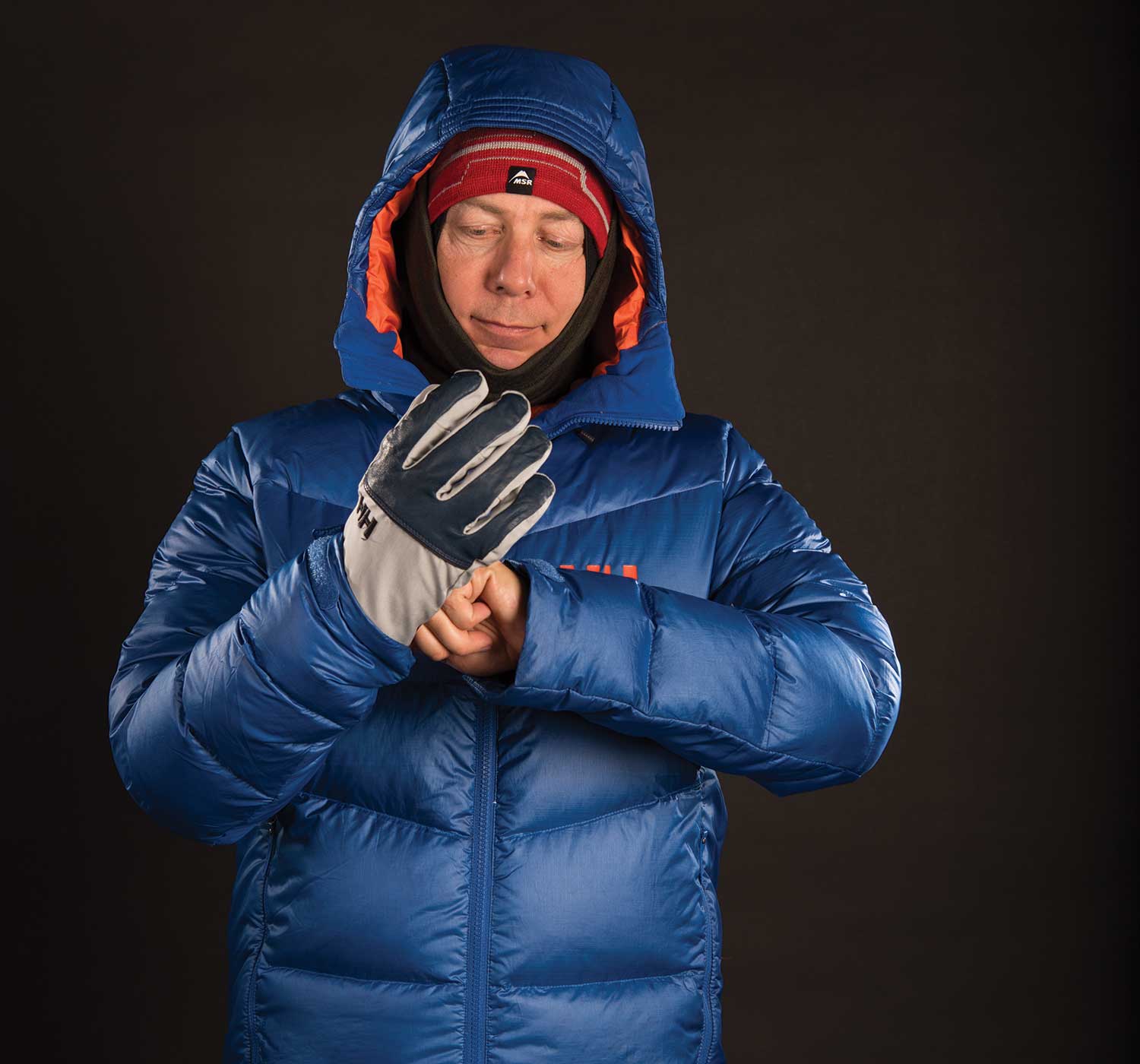How to Layer For Hiking: Insulation

'Louisa Albanese'
The Rule: “There is no such thing as cold weather—just not enough layers,” says polar explorer Eric Larsen.
How to Use Midlayers
When a baselayer isn’t warm enough, and hiking with a puffy is too warm, it’s time for a lightweight midlayer. Oddly, this is one of the most important layers in a good system, but also one of the least precisely defined. It can range from a vest to a light jacket. (Larsen simply doubles—or triples—his baselayers to maintain good breathability.) Midlayers come in a variety of synthetic and natural materials. Some use internal gridding, which increases surface area to wick moisture and hasten drying. Others use body mapping to target warmth in zones that need it.
Choose midlayers with full zips to maximize venting and make for easy on/off, as this layer comes and goes more than any other.
Know Your Insulation
Goose Down
Pros: durability, weight, compressibility
Cons: cold when wet
Duck Down
Pros: durability, weight, availability
Cons: slight odor, cold when wet
Wool
Pros: durability, breathability, wicking
Cons: weight
Short-Staple Synthetics
Pros: affordability, compressibility, wicking
Cons: durability
Long-Staple Synthetics
Pros: affordability, wicking, durability
Cons: compressibility, weight
Blow-In Synthetics
Pros: compressibility, wicking, durability
Cons: availability
What’s next for insulation?
Water-repellent down By coating down clusters with a water-resistant treatment, chemists erase down’s biggest weakness: moisture.
Active insulation Polartec launches Alpha, a porous synthetic insulation that wicks moisture and lets air pass through while you’re moving.
Blow-in synthetics Synthetic insulation usually comes in sheets. This fall, PrimaLoft and 3M debut synthetic plumes, solving synthetic’s biggest weakness: packability.
Dynamic venting By laser-cutting holes in synthetic sheet insulation and using a stretchy shell, The North Face Ventrix’s vents will open only when you’re moving.
Self-regulating synthetics
Scientists at the University of Texas are developing a fiber that coils and uncoils in response to changes in temperature.
Keep Your Layers From Clashing
Check for space: Make sure your baselayer fits smoothly under your midlayer without binding together or constricting your movement. Your midlayer should fit under your puffy, and your puffy under your shell without compressing its loft or leaving any fabric exposed.
Limit hoods: Hoods are a quick, easy-access way to add warmth and sun protection without finagling a hat, but too many can be hard to manage. Aim for no more than two hoods, including your shell.
Offset zippers: When zippers overlap, it can create inadvertent cold spots and discomfort, particularly under a sternum strap. Mix layers with crew necks and quarter- or full-zips.
Sleeping Bags: The Real Last Layer
There’s an unnerving feeling when the sun goes down, the temperature dips, and you zip into your heaviest jacket with miles to go before camp. It’s the precise moment you wonder if it’s going to get any colder, because you don’t have another layer to put on.
It’s a time for gallows humor, fear, and, of course, hope. But hope is not a strategy. Anyway, there’s no turning back now.
It’s not usually winter that brings this out the last layer. It’s the “easier” seasons: late fall on the Appalachian Trail in Shenandoah, a summer snowstorm in Glacier’s alpine zone. It comes when you push a fair-weather system beyond its margins, figuring it will be all right to be just a little uncomfortable.
This isn’t a unique feeling to camping, though the stakes are higher. It’s the feeling of bringing your brain to bear on your survival and then the suspense of waiting to see if it was enough.
The thought grows, eating at your attention. When your body gets cold and starts to shiver, it’s hard to think of anything else. Mistakes and miscues aren’t far behind as your divided mind loses its grip on the situation. This is the time when you can’t catch problems before they become catastrophes. This is the moment to act.
Because you may be an ounce-counter who didn’t pack enough layers, or maybe the weather changed beyond the range you were expecting, but you’re still a backpacker. You have a shelter. Find the first suitable spot, set up your tent, and get into your bag. Warm up in the real last layer.